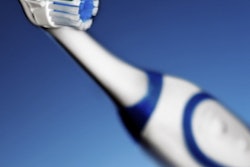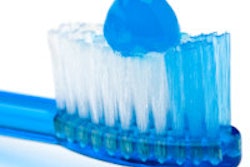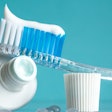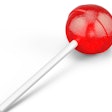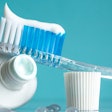BOSTON - U.K. researchers found that an experimental ultralow-abrasivity dentifrice performed similarly to a regular fluoride dentifrice for maintaining gingival health and controlling supragingival plaque and extrinsic stain, according to a poster presented on March 13 at the International Association for Dental Research (IADR) 2015 General Session.
In a single-center, randomized controlled study, 134 subjects participated over a 12-week period. The subjects received a dental prophylaxis and were randomized to twice-daily use of either an experimental less-abrasive dentifrice containing 5% w/w potassium nitrate and 5% w/w sodium tripolyphosphate (RDA~12) or a marketed fluoride dentifrice (Colgate Cavity Protection, RDA~68). The participants didn't brush their teeth for 18 hours before visits and were reassessed at six and 12 weeks.
The researchers evaluated the patients' oral soft tissue using two measures of oral health: gingival index (GI) and the Turesky modification of Quigley Hein plaque index (TPI). There were small but statistically significant differences in GI in favor of the experimental dentifrice, as well as small but statistically significant differences in TPI in favor of the marketed fluoride dentifrice.
Over the 12-week period, the experimental ultralow-abrasivity dentifrice performed similarly to the regular fluoride dentifrice in terms of gingival health, gingival plaque, and extrinsic stain, the researchers concluded.




